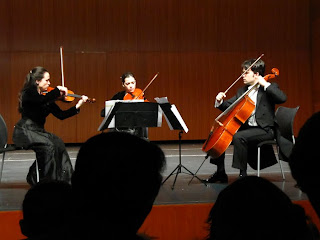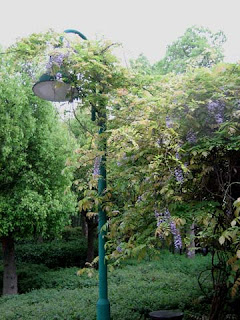Japan, Day One
It being a work day, the station was pretty busy even though it was early by commuting standards. There were two types of trains at the platforms, those heading out to the countryside and those bringing people into Nagoya for work, The latter kept arriving, standing room packed, every five minutes or so. People would push their way out and then sprint across the station floor towards the exit kiosks and the escalators beyond.
The 8:00 train occupied our platform which through us a bit so I asked a station master if it was indeed ours. He told me “Nexto one” and within minutes of my asking, the train pulled out, precisely on time. We waited about five more and in pulled ours from the direction of the recent departure.
I am very impressed with my train riding experience so far. They are cool, clean, well lit and the seats are quite comfortable. If you pay enough, there are even reserved seats so you end up with a guaranteed spot, at a window or an aisle depending on your fancy. Being designed for longer hauls, these cars also have spots in the end to store your luggage which makes for a nice uncluttered trip to wherever you are going. We pulled out precisely at 8:10, another example of the efficiency of this train system. My chief epiphany of the day is that this would be the way to see Japan – no stress, on time, with the countryside rolling by in cool, comfy surroundings.
Picking up speed and clearing the outer reaches of the city, we moved on into the rural countryside. I mentioned the greenness of it all yesterday, but this was even more incredible since we were genuinely outside the urban reaches of Nagoya. One thing you notice immediately is that every square inch of land is dedicated to something – there are no vacant, weedy lots. Each tiny cluster of homes has several small garden patches and every open space is planted in ride or cabbage or some other kind of food plant. Tiny cemeteries make up the remainder of the open space.
I saw many people out walking their dogs on the narrow asphalt lanes that defined the paddies. Hundreds of Egrets, Great, Cattle and Chinese filled the irrigation ditches and flooded fields, looking for a crustacean for breakfast. In one field I saw a big billboard that looked to have lights along the top. They turned out to be a half-dozen Grey Herons waking up for the day. Cormorants cruised, body sub-surface on every small pond.
Being near the sea, we crossed many rivers draining the misty mountains off to our right side. It appeared to be raining up their, judging from the broken clouds clinging to the spines of the forested hills. It was the kind of ride you wish would never end.
An hour or so later we arrived at Ise and were met by our business contact. We hauled our suitcases a few blocks down a small lane to our hotel. Ise is a small city of about 80,000, and so the lodging is limited. Suffice it to say for the moment that there is a big contrast to what I have become accustomed to staying in. More on this later.
After a taxi ride to the factory in which I almost fell out the back door when the driver pushed his “door open” button, we spent the day doing the work we had come here for. Aside from the lunch (“Bento Boxes” consisting of salad, rice, deep fried pork slices, cold beef and cabbage, and a hamburger with gravy) and the building slippers, nothing much extraordinary happened. The slippers though were nice. A Japanese custom, street shoes are not worn into homes or businesses and so what you end up wearing are slippers provided by the host. I wore a pair of Adidas athletic slippers because the standard leather mules were a bit short for my western feet. At first I thought it was strange, but after spending a whole day at work padding around in comfort shoes, I will say we could learn something from this custom. You just feel far more relaxed and peaceful.
After work it was off to dinner at a local brewery, one of German inspiration and décor. Once again, I found myself in a culture warp – steins of home made beer, white plaster walls with exposed wooden beams, sausages, French fries, edamame soybeans, sushi, a couple of quesadillas, and the very best plate of tongue I have ever tasted. I raved about it so much that my Japanese host became embarrassed.
Weirdest though was the music – a tape loop of French accordion music mixed in with the occasional Django Reinhardt tune. We were transported by food and music to 1920s Cologne, in a blue collar bar favored by bargemen, train engineers and stevedores. At least it felt that way.
That done we drove back to the hotel and walked down the street to a French pastry shop for a desert. The place had the most incredible selection of ice cream bars that I have ever seen. Twenty or more freezers all containing some variety of fruit, ice cream, popsicle or frozen gelato treat. If I’d been in the mood for something cold, it would have been nearly impossible to choose. I went for some freshly baked chocolate shortbreads instead.
All in all a busy day and a nice introduction to the country. Tomorrow more work and perhaps a chance to wander around the city a bit. Before leaving tonight we almost made it to one of the classic shrines here in town, but it was getting dark (at 6:30!) and we were scheduled to leave for dinner. There are two, Naiku and Geku, and they are considered the chief Shinto shrines in the country.
Before closing, a word or two about my hotel room. You’ve all read my exhortations of the hotels I regularly use, and so you’ll instantly understand just how special this one is.
It’s about 8 feet by 12 feet and furnished with a bed somewhere between a twin and a double whose headboard contains an alarm clock, an AM/FM radio, controls for the air-conditioner and a power outlet for who knows what. The desk has a built in refrigerator and a small cabinet for the coffee pot. There is a table and chair that fill up the remaining unfilled square footage. There is a small closet that is not long enough to hang my slacks in and of course, a buckwheat pillow which one will find in most hotels over here.
Strangest though is the bathroom, a prefabricated, self-contained module that you have to step up to in order to enter. There is a little soap and shampoo dispenser on the wall, a tub too short to lie down in but with thigh high walls, one of those special Japanese toilets with “bottom rinse” and one, tiny little bath towel.
I’m including some pictures below, but they are cropped by the fact that the place is too small to allow for a good distance shot. While this is not one of those famous “tube hotels”, it is about the smallest room I have ever been in. But it’s clean and quiet and I am sure I will be a better person for the experience even if there is no penthouse lounge and I'm not collecting any frequent visitor points.




sdhsjdhjkasdhhdasjdhkajshdjahsddjashdkjahsdkjhaskjdhaksjhd






Comments